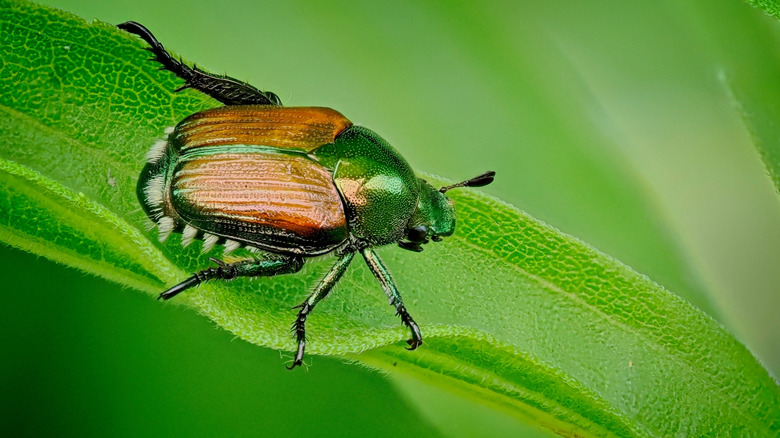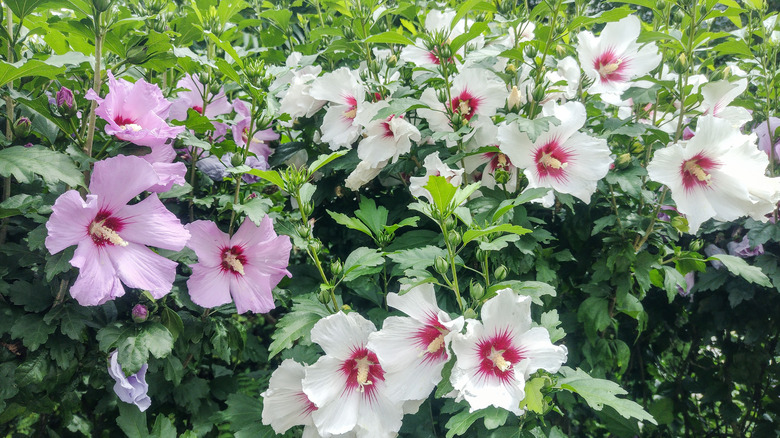The Japanese Beetle-Attracting Flower You Might Not Want To Grow In Your Yard
When tending to your garden beds, the sight of green and copper-colored beetles can understandably make your heart sink. It's hard to mistake these characteristics of the Japanese beetle (Popillia japonica), which is an invasive species in North America known for their large appetite for a variety of plant life. In fact, it's estimated the Japanese beetle eats more than 300 types of plants, and an infestation in your yard or garden can quickly lead to damage. Hibiscus flowers (Hibiscus rosa-sinesis) are among the types of plants Japanese beetles are attracted to, which could make gardeners think twice before planting them.
Hibiscus is a popular plant in the U.S. thanks to its large flowers that come in a range of colors. Knowing the right tips and tricks to keep your hibiscus plant growing and thriving can keep the plant looking gorgeous while also helping the local ecosystem. Flowering hibiscus is particularly beneficial for local pollinating species, including bees, butterflies, and hummingbirds. Unfortunately, destructive Japanese beetles also favor hibiscus plant. The insects especially like Rose of Sharon (Hibiscus syriacus) cultivars, which can grow up to 10 feet tall and wide. You're also more likely to see Japanese beetles thrive in gardens in the eastern U.S.
Why Japanese beetles are attracted to hibiscus plants
It's thought that Japanese beetles favor hibiscus because of the plant's soft leaves. In theory, this can mean easy-to-eat food the insects can feast on rather quickly. Also, Japanese beetles tend to be most active in sunny locations, and they like to eat plants in direct sunlight. It's no coincidence that their favored Rose of Sharon hibiscus cultivar is best-planted in areas of full sun.
Once Japanese beetles find a plant like hibiscus to feed from, you will likely see several small holes throughout the leaves of the plant. The adults quickly gather along the upper parts of the leaves where they devour tissues between leaf veins, too. Subsequently, an affected hibiscus plant may look like it has skeletonized leaves. Also, Japanese beetles tend to start feeding at the top of plants, and then work their way downward. What's more, these beetles tend to feed in large groups, which could potentially place your hibiscus plants in great harm relatively quickly.
Japanese beetles unfortunately do not have any natural predators, which leaves controlling them in your yard up to you. The key is to act quickly to help get rid of these damaging insects so you can preserve the livelihood of your hibiscus. While experts recommend insecticides, there may be other measures you can try first. Instead, you might keep Japanese beetles out of your garden by planting geraniums. Alternatively, soapy water could be the secret weapon you need to get rid of Japanese beetles.

